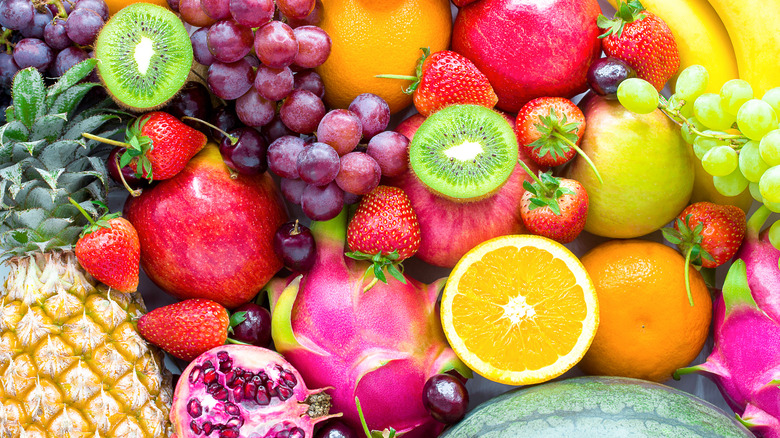Fruits You Should Avoid If You Get Migraines
If you have ever experienced one, you know that migraines can be painful and debilitating. In fact, migraines affect 39 million people in the U.S. and 1 billion worldwide — including children (via Migraine Research Foundation).
Part of determining how to treat or prevent migraines is determining triggers. Along with triggers like exercise, hormones, weather conditions, sensory stimuli, and stress, food can also be a trigger for some migraine sufferers (via the Association for Migraine Disorders). There is some question about the scientific research behind food triggers, and fewer than 30 percent of people with migraines have theirs triggered by food. This means the migraine symptoms begin within 24 hours of eating the food — and it must occur more than half of the times the food is consumed.
According to the Association for Migraine Disorders, phenylalanine in particular can trigger a migraine. Some fruits that contain phenylalanine are dried apricots, avocado, canned figs, dates, citrus, papayas, raisins, and red plums.
Fruits can sometimes cause the release of histamines that can trigger a migraine due to their pollen (via Medical News Today). Bananas, grapefruits, oranges, plums, and raspberries are examples of the fruits that could contain pollen or other compounds.
How to battle migraines and still enjoy fruit
More research is still underway to link fruit as a migraine trigger. One recent study by Brazilian researchers found that 40.3 percent, or 1,584 of its study participants, had a migraine start within eight to 90 minutes of consuming watermelon, passion fruit, orange, pineapple, grape, banana, cucumber, acerola (like a cherry), and papaya, with an overwhelming amount reporting watermelon (via Eat This).
So how can you use this information to help treat migraines? Experts say food journaling and trying an elimination diet may be key. It would be difficult to eliminate all possible food triggers at once, so an elimination diet has you removing one or two items from your diet for two weeks and reintroducing them one at a time (via Association for Migraine Disorders). If you experience symptoms after introducing certain foods, they could be a migraine trigger and you may want to avoid them.
As always, you should consult with your medical team before implementing any major dietary changes, and for migraine treatment options specific to your needs.


